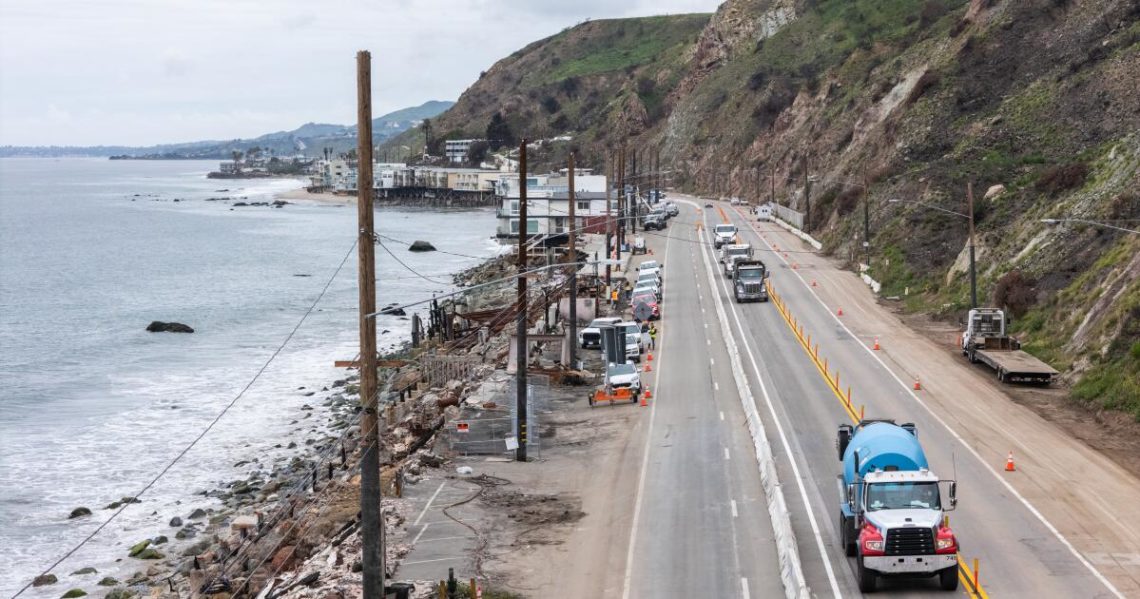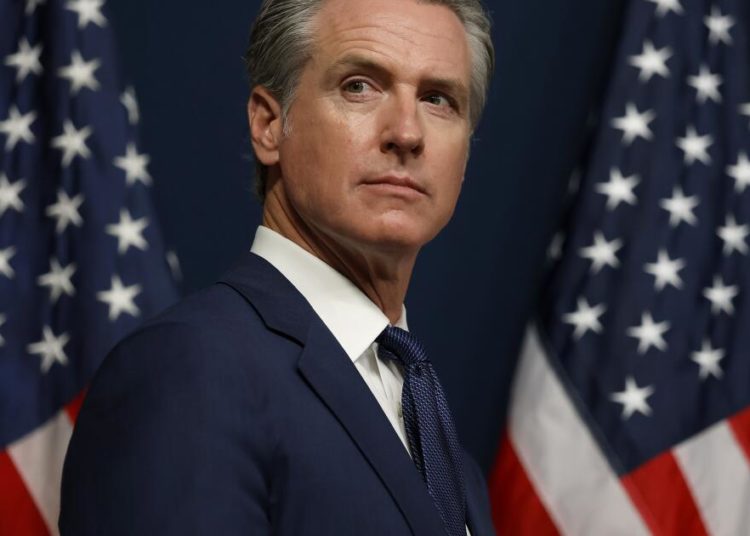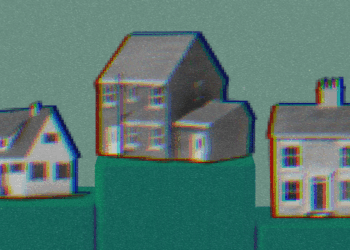More than 30 years after Malibu residents formed a city, largely to block sewers and rampant development, leaders in the coastal community are talking about building a sewer system.
The Malibu City Council has asked for a preliminary assessment of how to construct and finance a sewer line along Pacific Coast Highway, serving a nearly four-mile stretch of coast where 327 homes burned in the January wildfire.
While Malibu’s leaders and citizens remain adamantly in favor of controlled growth, they believe there may be a way to build a sewer that does not open the way for wide-scale development, while also making it more likely that human waste won’t flow from homes into the ocean.
Water quality officials have long complained that septic systems in Malibu didn’t adequately control sewage and that pathogens seeped into groundwater and then into local creeks and Santa Monica Bay.
All of the hundreds of homes destroyed on the coast highway operated on outdated septic systems, which would give way to a sewer system if the city decides to build one.
A secure sewer main delivering human waste to a treatment plant would reduce the threat posed by leaky septic tanks and leach fields — an upgrade that Malibu City Council members said they would like to accomplish, if they can.
But the majority of the council has made clear that they won’t approve a sewer if they think it will slow reconstruction of homes along PCH, or open the door to hotels, apartments and “Miami Beach”-style development.
That’s just the scenario cityhood proponents railed against in their successful drive for Malibu incorporation in 1990. When the first Malibu City Council took charge in 1991, it quickly abandoned a Los Angeles County plan for sewers. Most Malibu leaders since then have allowed little building that would be at odds with the community’s semirural roots.
But the January fire has opened a reconsideration of many topics. That has council members voluntarily considering a sewer to a degree unseen in the city’s 34-year history.
“I think we should do everything we can to put the sewer in [and] figure out how to get it paid for,” Councilman Steve Uhring said at a recent public hearing. “That’s what Malibu is about. We are supposed to protect the environment [and] that’s the best way to do it.”
Uhring and his fellow council members have made clear that they intend the new sewer to serve only the current homes and businesses along the burn zone — roughly from Topanga Canyon Boulevard to Carbon Canyon Road.
“There is the ever-present concern that [a sewer] is going to open the way, even in that limited area, for greater development than was intended,” Councilman Bruce Silverstein said in an interview.
Councilman Doug Stewart suggested that by limiting the capacity of the sewer “we can make sure we don’t get high-density apartment buildings or hotels along the coast. This would be to put people back in the homes they had before.”
Added Stewart: “We have to be careful we don’t ruin the environment by trying to protect it.”
Mayor Marianne Riggins and Councilwoman Haylynn Conrad also have agreed the city should study the possibility of, as Conrad called it in a newspaper column, “the S-word.”
But many questions remain: Where would the effluent from a PCH sewer be treated? Who would pay for the work? And how would waste from coastal homes be handled in the five years or more it would take to finish the project?
Malibu Public Works Director Rob DuBoux recently presented the City Council with four sewer treatment alternatives and a fifth choice, which would allow homeowners to keep, and upgrade, their onsite waste treatment systems.
The city lawmakers said they leaned toward the plan that DuBoux projected could be built most quickly and at the least expense. That option would have the city lay a sewer line under PCH to the city of Los Angeles sewer that runs up the highway to nearly Coastline Drive, more than a mile from Malibu’s eastern border.
That sewer ultimately connects to the Hyperion Treatment Plant in El Segundo, where the waste gets “full-secondary” treatment, to make it safe to release via an outfall pipe about five miles offshore.
DuBoux said that a preliminary calculation suggests the work would cost $124 million and take five years and five months to complete, though he acknowledged more detailed plans and projections must be completed.
Malibu would apply for grants and loans to try to reduce the cost of the project.
Some property owners who lost their homes in the January fire believe the sewer could be a less expensive alternative than rehabilitating their septic systems. Regional water quality officials have made clear they expect the systems to be modernized and adequately protected from the advancing ocean, on a stretch of highway where the underground systems have little to no dry sand buffer from the waves.
Estimates for the cost of new septic systems and protective seawalls have spiraled to $500,000 and considerably more, homeowners say.
Alternatively, if the city formed an assessment district and charged homeowners for the system tying into Hyperion, the cost would come to $269,000 per property, DuBoux projected. “This is the … best, easiest solution to do,” DuBoux said during a public hearing.
Silverstein warned that public works projects usually end up costing “150% to 200% of what people think they will cost” and that sticking with septic systems is still the most likely outcome.
Malibu built a sewer before, but only after regional water quality officials prohibited long-term use of septic systems in a broad area centered on the Civic Center. The prohibition zone, which includes the exclusive Malibu Colony and verdant Serra Retreat neighborhood.
The no-septic order followed the water officials’ determination that the individual underground treatment systems were leaking waste into groundwater and on to Malibu Creek, Malibu Lagoon. The pollution sometimes rendered renowned Surfrider Beach unsafe for swimmers and surfers.
The city subsequently approved a sewer to serve the center of the city. Workers completed the first phase of the Civic Center sewer in 2018. A second phase, to serve the exclusive Malibu Colony and Malibu Road, has been delayed and one branch of the system, to Serra Retreat, put off indefinitely after the discovery of Indigenous artifacts.
The waste from the Civic Center sewer is treated at a small plant on Civic Center Way near the foot of Malibu Canyon Road.
A new PCH sewer theoretically could tie into the Civic Center system. But DuBoux projected it would cost $64 million more than the Hyperion connection. And City Council members noted that the Civic Center treatment plant’s capacity could not accommodate waste from both the burn-zone homes and from neighborhoods already projected to connect into the system.
Another option would be for a new PCH sewer line to connect with the Las Virgenes-Tapia Water Reclamation facility high in Malibu Canyon. That option would require twice as much pipeline and cost more than twice as much as the Hyperion connection, DuBoux estimated.
Though council members expressed no interest in the Las Virgenes connection, environmental scientist Mark Gold said in an interview that all options deserved more study. Gold, of the Natural Resources Defense Council, noted that the Las Virgenes sewage plant produces reclaimed water that could be returned to Malibu for irrigation and fire protection.
Under yet another scenario, Malibu would build a new treatment plant somewhere near the coast. Council members expressed skepticism about finding the proper location. They also worried about the nearly seven-year timeline estimated for that work.
While Malibu leaders ponder the future, the state of most of the septic systems along PCH remains a mystery. Fire debris remains heaped atop many of the underground tanks, as the Army Corps of Engineers and private contractors clear away the rubble.
Until the lots have been cleared, no one has completed an inspection to determine whether the septic systems remain functional.
Even before the fire, few septic tanks and leach fields probably met current standards, which require substantially enhanced removal of pathogens. Another abiding challenge: Sea level rise and bigger storms that have come with climate change have eroded most of the beach that once separated the waste systems from the ocean.
Malibu officials suggest they would be open to a trade-off: If they agree to build a sewer, then residents along PCH should be able to keep even substandard septic systems in place until the sewer can be completed.
It will be up to the Los Angeles Regional Water Quality Control Board to determine whether the short-term harm of increased pollution is worth absorbing to gain the long-term improvement a sewer would provide. The agency said in a statement that it “looks forward to working with the City of Malibu to explore viable solutions.”
Tonya Shelton, a spokesperson for the L.A. City Bureau of Sanitation, said Malibu’s potential link to the coastal sewer and the Hyperion plant “would require more study,” though “a cursory review indicates it may be feasible.”
Gold emphasized that the city should complete ocean testing as soon as possible to determine whether septic systems are leaking human waste into Santa Monica Bay. “It’s the city’s duty to make sure that happens,” Gold said.
The scientist said the crisis created by the fire also presented an opportunity.
“You can build facilities in a manner that is not growth-inducing,” Gold said. “And you may also be able to enhance water supply and fire resilience.”
The post A sewer in Malibu? January firestorm has coastal city pondering the once-unthinkable appeared first on Los Angeles Times.




